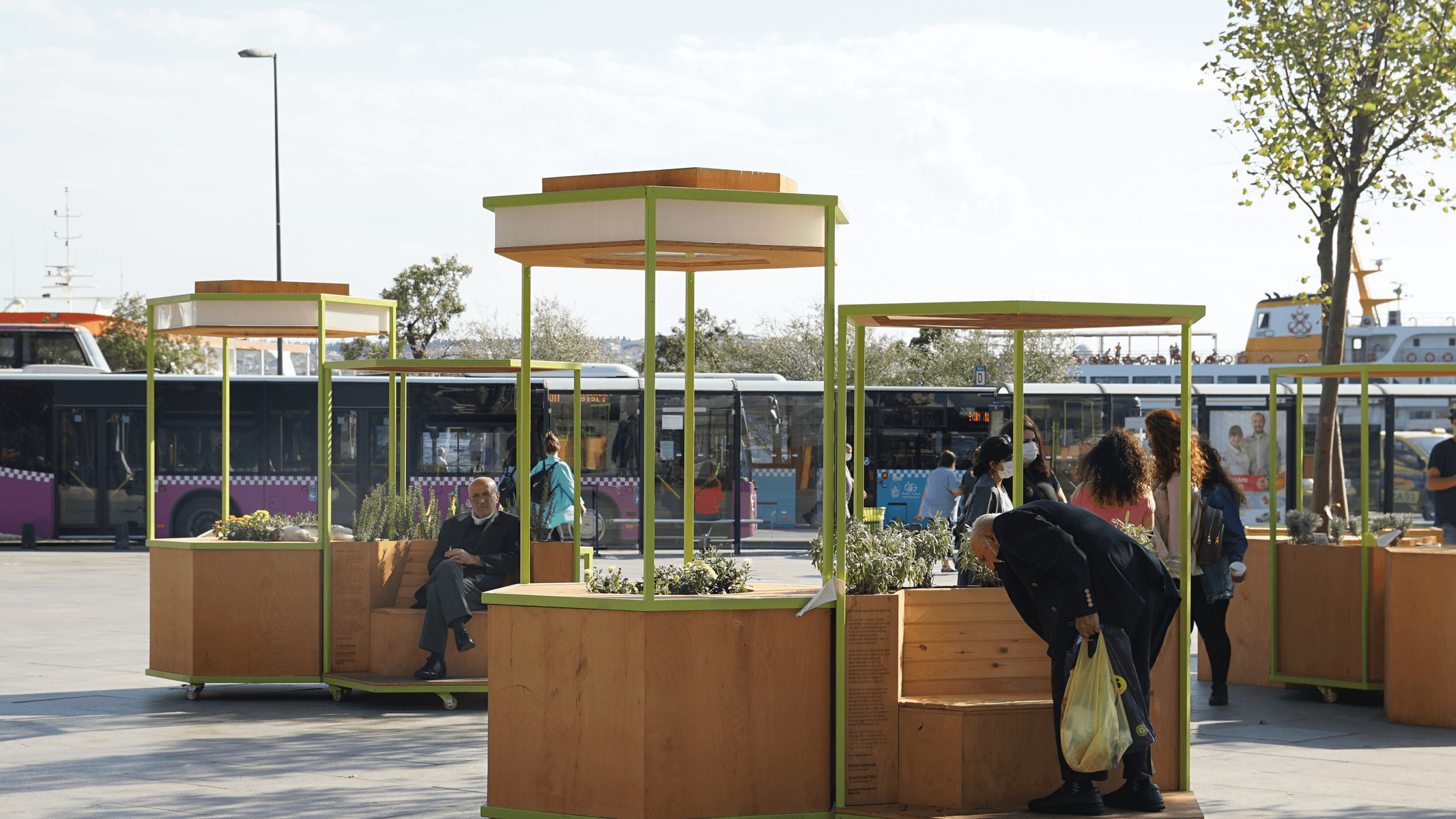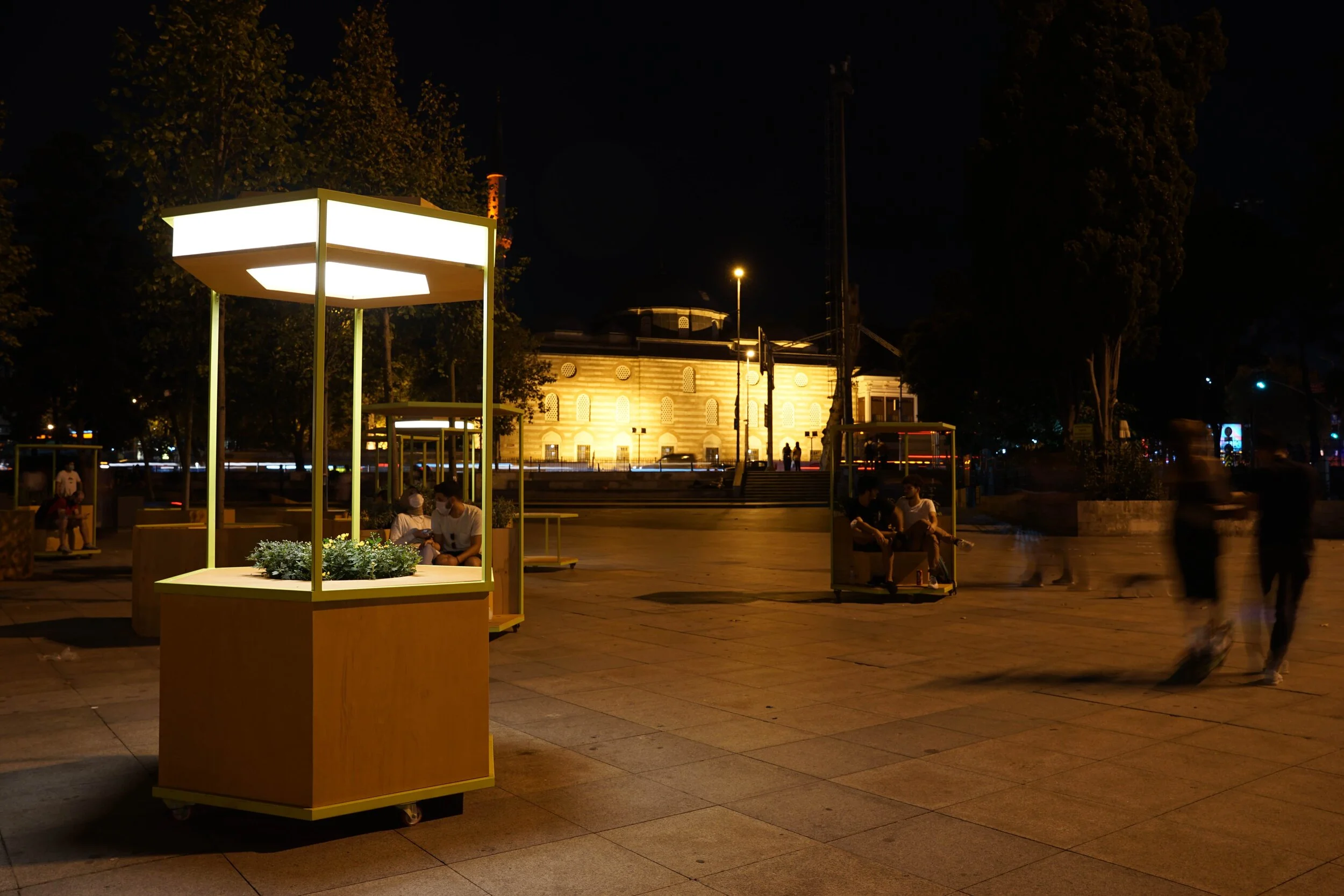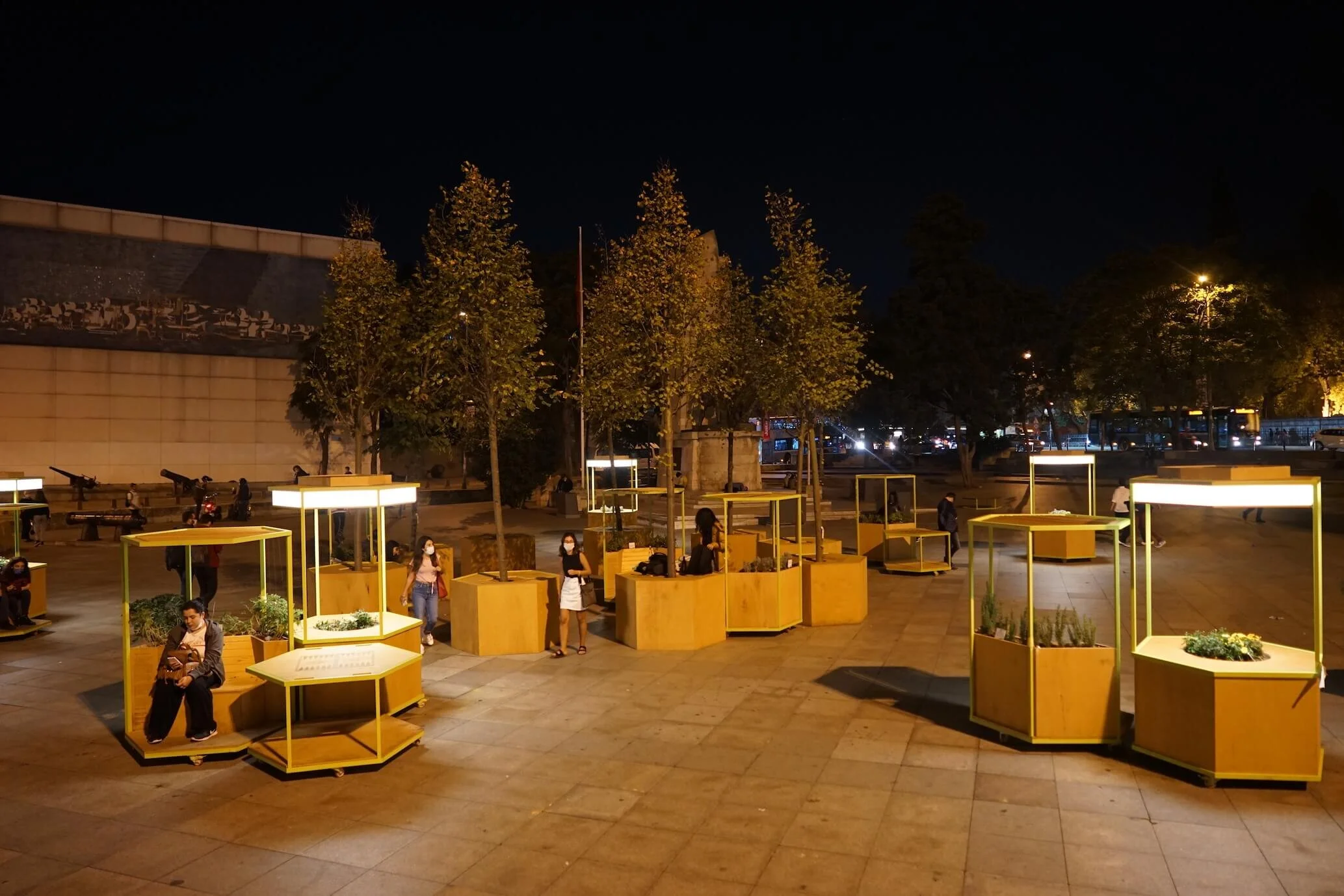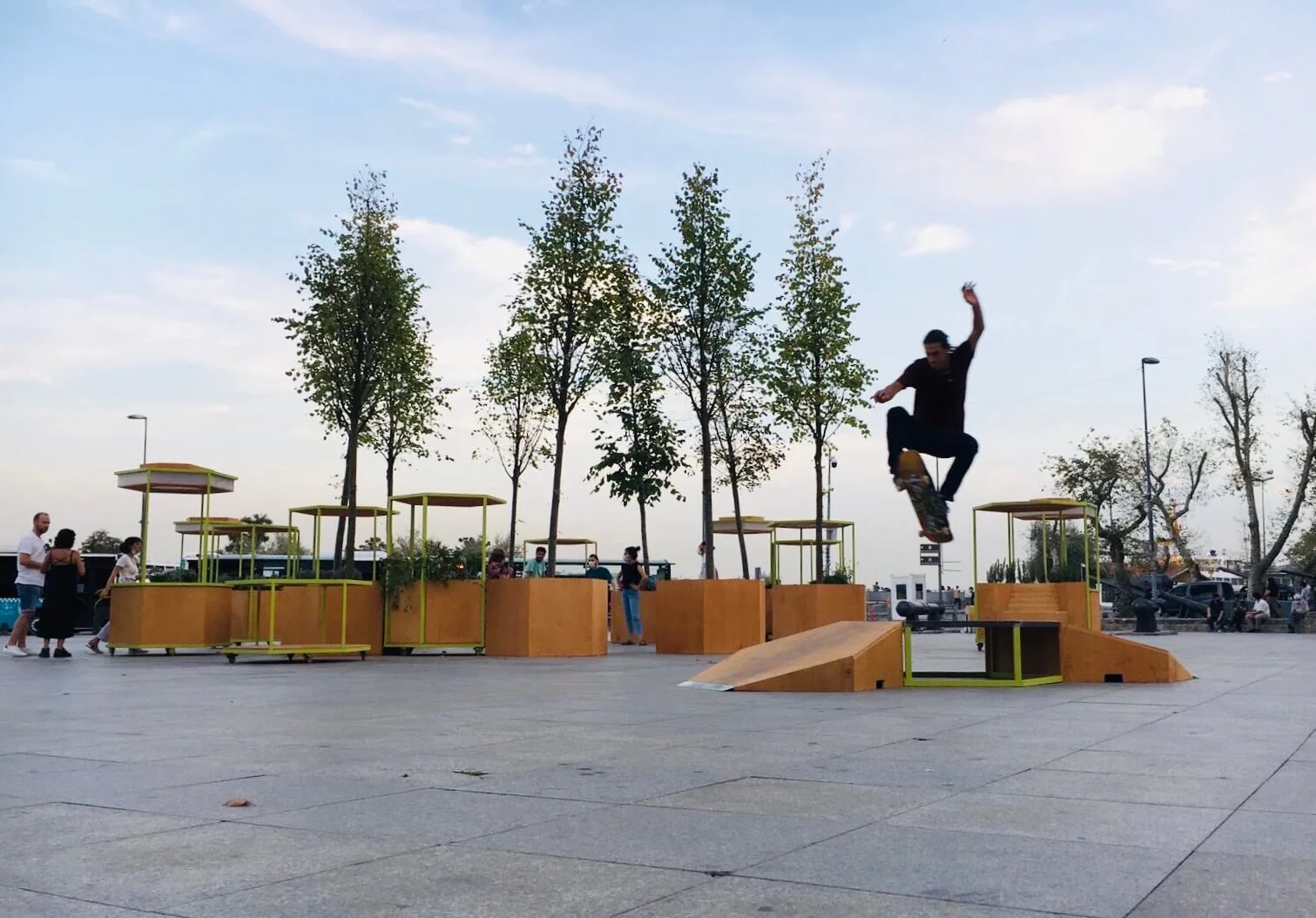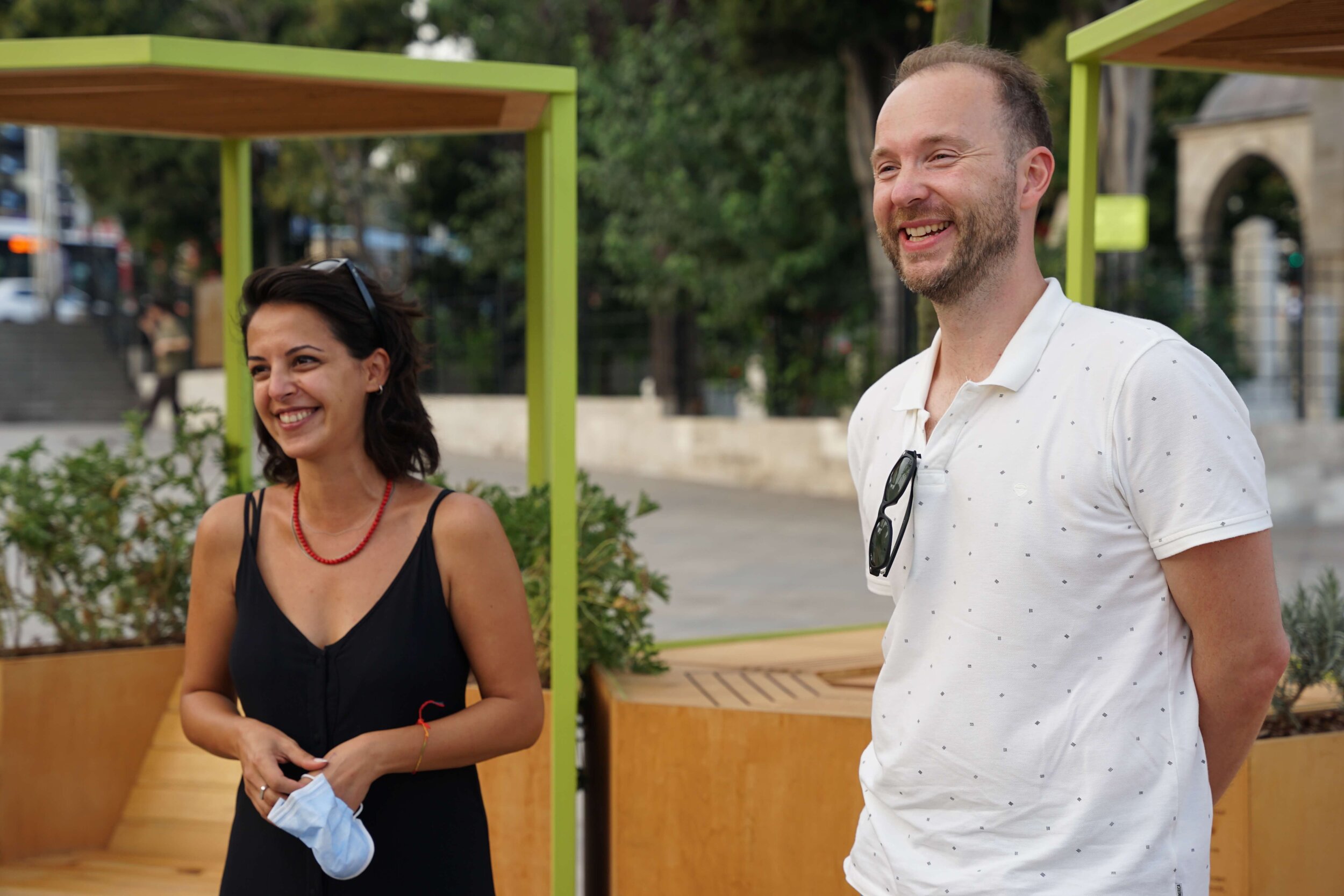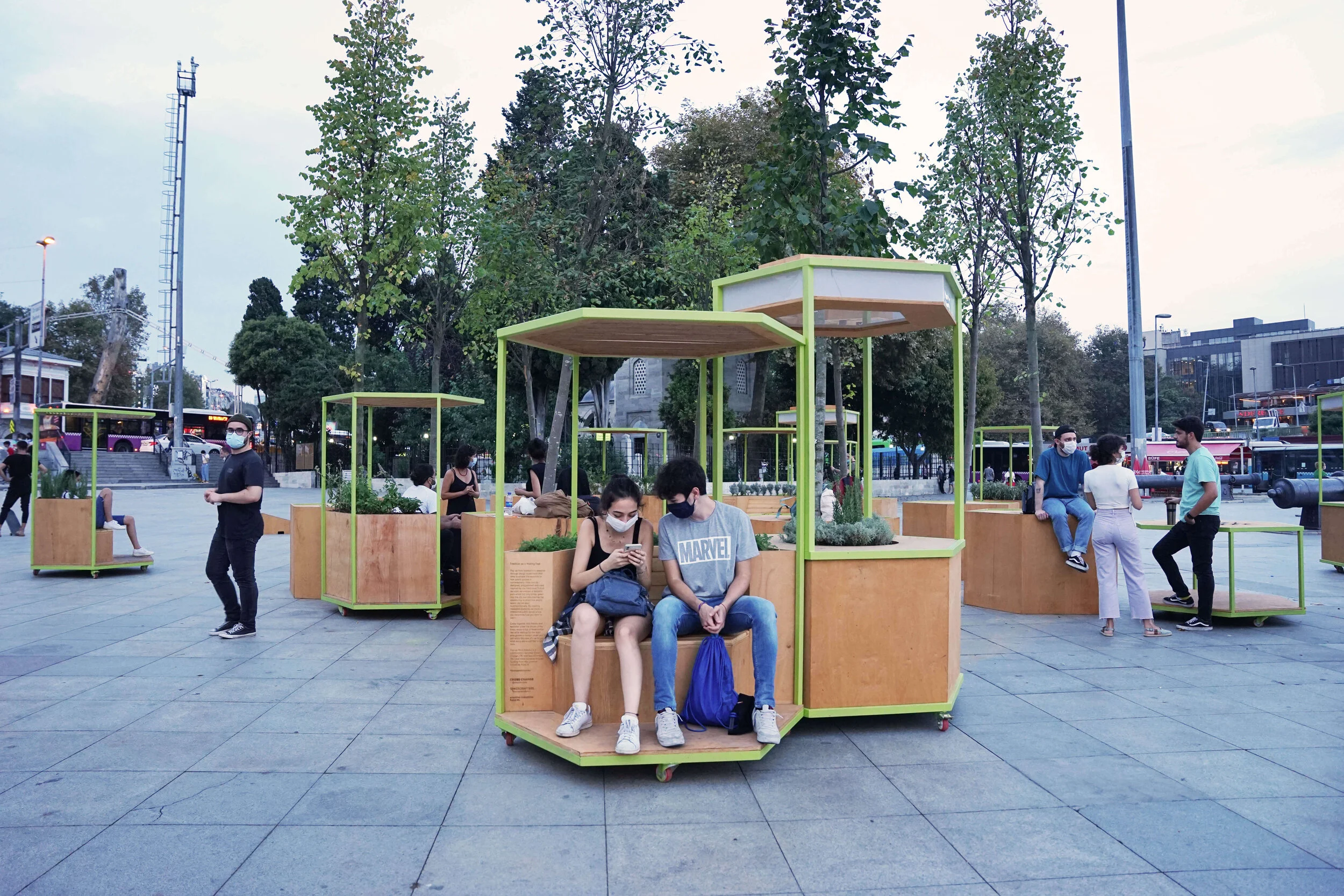#PopUpParkIStanbul
How can we use tradition as a facilitator to transform monofunctional public spaces into collective, multi-functional, and value-added spaces to create more inclusive, livable, and greener cities?
Pop Up Park Istanbul is a research by design and doing project seeking to find an answer to the question of how the public spaces in busy contemporary cities can be designed, programmed, and used.
“Pop Up Park Istanbul” seeks to overcome this problem by connecting the design and use of public spaces with local cultural traditions, bringing the sense of community common in rural life to modern city life. The main objective of the project is to give back public space its true meaning, its raison d'être to help create a more livable, inclusive, and sustainable city.
“Tradition as a Making Tool | Pop Up Park Istanbul” is a continuation of our research and our findings from the first phase, but now implemented on a larger scale and in a new location. The project has been developed under the influence of the 2020 Covid-19 worldwide pandemic The main question still remains; How can we use tradition as a facilitator to transform monofunctional public spaces into collective, multi-functional, and value-added spaces to create more inclusive, livable, and greener cities?
*This project was created in cooperation with our Dutch partner Space Crafters. We were one of the 4 selected projects from Turkey for StimuleringsFonds Open Call: Turkey, Russia, Egypt, Morocco, funded by Creative Industries Fund NL.

movable, multifunctional tea park
The design concept takes its inspiration from the traditional Turkish tea gardens, a place for social gatherings with friends and family under the shade of trees. We designed a moveable park which not only brings green into the city but also creates the opportunity to show how public space can be used multi-functionally. By making it moveable we created an interactive continuously changing public space. It invites the users to make a connection between them and the public space, to create a sense of involvement with their own environment and therefore a shared feeling of responsibility.
Within the design concept, all of the seating, lighting, and table elements are designed as movable elements. The measurements of the modular elements are in accordance with the social distancing rules brought by the pandemic.
The seating and lighting elements also function as tea gardens which contain 9 different medicinal and aromatic herbs like Sage, Lemongrass, Stevia, and Rosemary. You can enjoy a fresh cup of tea by grabbing a leaf and putting it into a cup of hot water and enjoy a quiet moment within the bustle of contemporary city life. The lighting elements are designed with solar panels, to provide a green, sustainable, and safer gathering place also at night.
The users determine how to interact and use the public space. Come together with friends and socialize under the shade of the trees, enjoy a cup of fresh herbal tea while waiting for the boat, play games or move a chair, and just enjoy the view. It’s up to the user what experience they would like to have here.
“Pop Up Park Istanbul”, is the second phase of the 1.5-year “Tradition as a Making Tool” project collaboratively designed and implemented by impact-oriented design studio Cross Change (TR) and architectural firm SpaceCrafters (NL) and supported by Creative Industries Funds NL.
Project Designer & Manager: Tuğçe Akbulut
Architect: Jurgen Ten Hoeve
With the kind support of Beşiktaş Municipality
Photos & Video: Mail Murad
Video Editing: Serkan Arslan
Illustrations: Serhat Aksu
Book Design: Tolgahan Akbulut
Impact Assessment: Simla Akbulut
Result
Our design approach that is developed based on the traditional tea gardens is a proposal for a multi-functional park to meet the needs for public spaces within the contemporary city. Based on the limitations and opportunities of the site, the flexibility we wanted to propose, and current restrictions due to the pandemic, we designed a mainly hexagonal furniture line that offered four different functions. When combined, the furniture created a semi-enclosed space just like an autonomous tea garden, and with the help of trees that offer shade—again, just like a tea garden—the space became a true venue.
The furniture line consisted of 9 anchored trees, 8 seating elements, 5 lighting elements, 3 table elements, and a mini skatepark. Each of these components was designed to combine with others in different layouts that allow visitors to do a range of activities, like sitting down across from one another at a table or using the site as an event space.
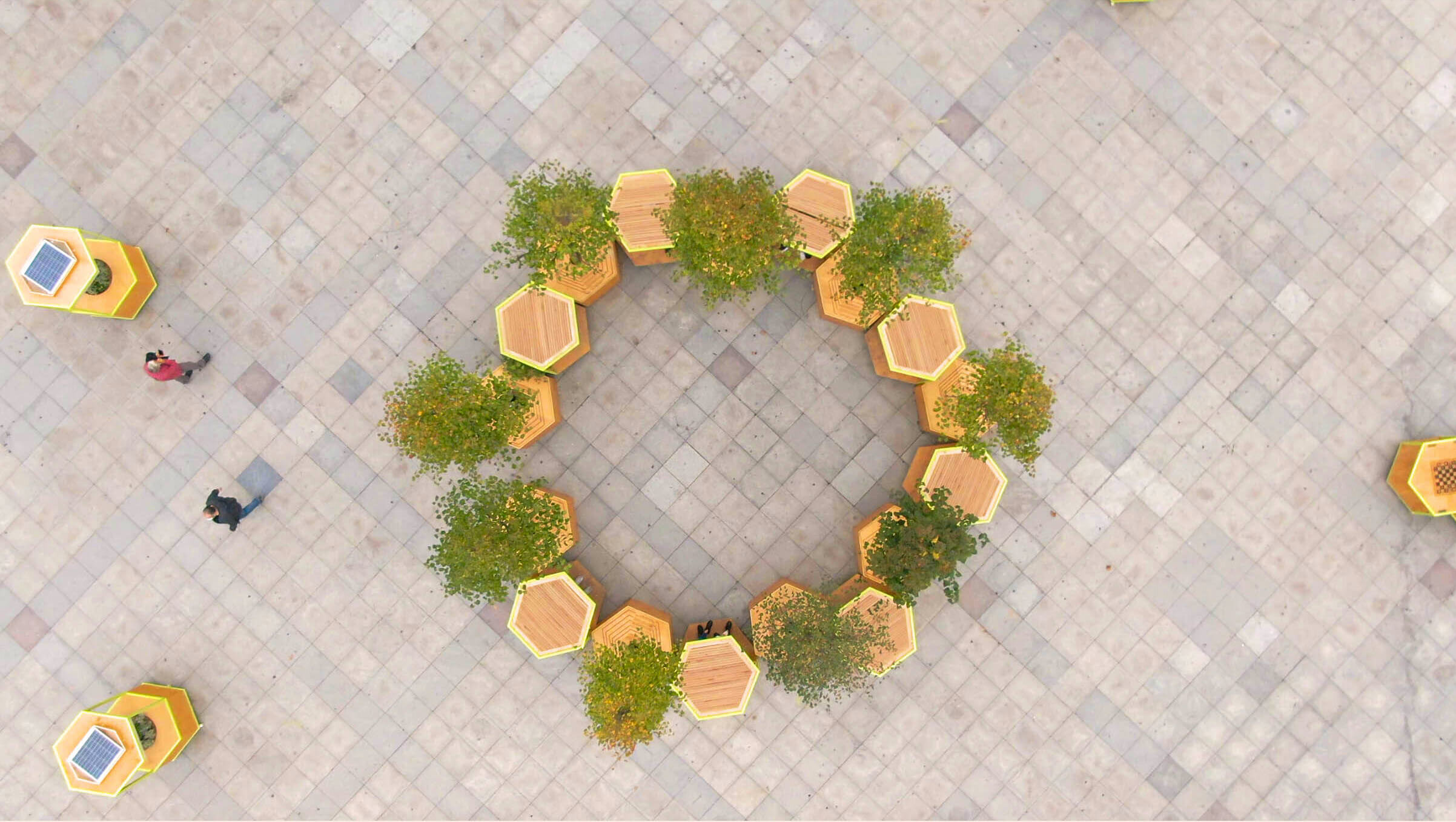
Impact of Pop Up Park Istanbul
As a team, we wanted to map the temporary and lasting impacts on permanent and temporary users of our design approach, the public space elements we produced, and the park we created. And we are happy to share our insights with you.
Although this study is inspired by a scientific method (SROI), the output is not a scientific or academic study. You can look at this work as an experiment by two curious design professionals, inspired by the methodical approach of social sciences and the methods that impact ecosystem uses to prove their impact. We carried out this experiment in order to inspire institutions and individuals who believe in the effect created by impactful design.
We’re excited to make this effect more visible, to remind decision-makers of the potential of design in a tangible way, and to ignite future experiments and collaborations for the curious.




